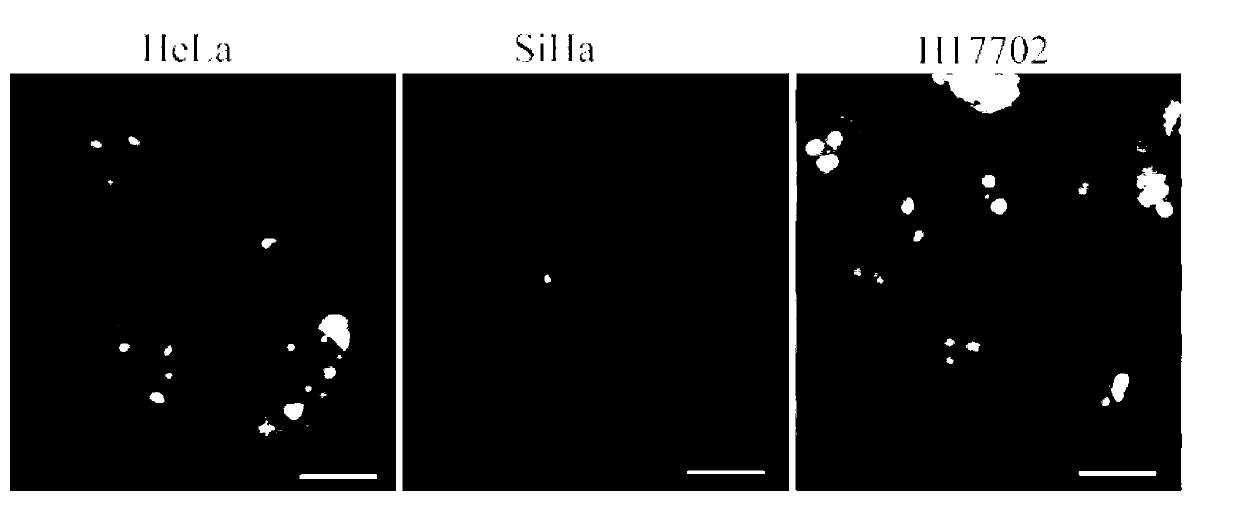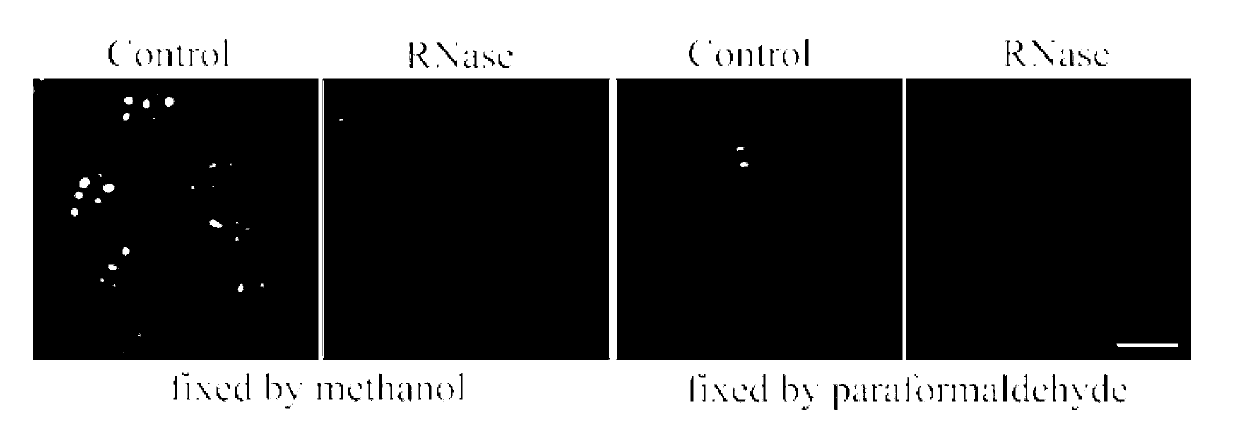Pyrrole pyridine salt fluorescent probe used for RNA (ribonucleic acid) and nucleolus imaging in living cell
A fluorescent probe, pyrrole pyridine technology, applied in the field of fluorescent probes, can solve the problems of unclear mechanism of interaction between small molecules and RNA, limitations of pathological research and drug development, and difficulties in RNA probe research, achieving strong photostability , good membrane permeability, strong color effect
- Summary
- Abstract
- Description
- Claims
- Application Information
AI Technical Summary
Problems solved by technology
Method used
Image
Examples
Embodiment 1
[0026] Embodiment 1: Synthesis of (E)-1-(2-hydroxyethyl)-4-(2-(1-methyl-1H-pyrrole-2-)vinyl)pyridine iodide salt (1c)
[0027] Dissolve N-methyl-2-formylpyrrole and N-hydroxyethyl-4-picoline in methanol to obtain a light yellow transparent solution, add 3-4 drops of piperidine, and the solution turns red rapidly. After reflux reaction for 4h, a purple-red precipitate precipitated out. Cool, filter, and wash with dichloromethane to obtain small purple-red crystals with a yield of 90%.
[0028] 1H NMR(400MHz,DMSO-d6),δ(ppm):8.70(d,J=6.9Hz,2H),8.12(d,J=6.9Hz,2H),8.40(d,J=15.9Hz,1H) ,7.08(d,J=16.0Hz,2H),6.89(dd,J=3.96,1.44Hz,1H),6.22(dd,J=3.84,2.56Hz,1H),5.21(t,J=5.24Hz, 1H),4.47(t,J=5.04Hz,2H),3.84(t,J=6.0Hz,2H),3.81(s,3H).13C NMR(400MHz,DMSO-d6),δ(ppm):154.23 ,144.31,130.98,130.11,129.20,122.53,117.94,112.97,110.39,61.99,60.53,34.59.HRMS(m / z):[M-I]+.Calcd for C14H17IN2O,229.13;found,229.14.
Embodiment 2
[0029] Example 2: HeLa, SiHa and H17702 cell culture
[0030] HeLa, SiHa and H17702 cells were adherently cultured in culture medium containing 10% fetal bovine serum at 37°C, 5% CO 2 Cultured in a saturated humidity incubator, and subcultured once every 2-3 days.
[0031]When the cells grow to the logarithmic phase, culture the slices: ① Soak the coverslips in absolute ethanol for 30 minutes, dry them with an alcohol lamp and place them in a disposable 35mm culture dish for later use; Wash the cells three times with PBS, digest with 1 mL of 0.25% trypsin for 3-5 minutes, pour out the trypsin carefully, add fresh culture medium and pipette evenly, and count the cells. Concentration is 1x10 5 , and then inoculated into the above-mentioned petri dish with coverslip in 5% CO 2 Cultured in an incubator to allow the cells to grow on the sheet.
[0032] After the cell slides grow and cover the coverslip, they are used for experiments.
Embodiment 3
[0033] Example 3: (E)-1-(2-hydroxyethyl)-4-(2-(1-methyl-1H-pyrrole-2-)vinyl) pyridinium iodide salt (1c) to HeLa, SiHa and Staining Observation of H17702 Cells
[0034] Wash the coverslips (climbing slides) covered with HeLa, SiHa and H17702 cells prepared in Example 2 three times with PBS, and then use (E)-1-(2-hydroxyl at a concentration of 20 μM diluted with culture medium Ethyl)-4-(2-(1-methyl-1H-pyrrole-2-)vinyl)pyridinium iodide fluorescent probe solution in CO 2 In the incubator, stain the various cells for 30 min respectively.
[0035] Take out the stained slides, wash away the unbound excess dye solution, cover the cell growth side down on the glass slide, observe under the fluorescence microscope and laser scanning confocal lens, and record the stained parts, fluorescence distribution and brightness in the cells change etc.
[0036] see results figure 1 , figure 2 . The fluorescence image shows obvious green light distribution in the cytoplasm and nucleolus, c...
PUM
 Login to View More
Login to View More Abstract
Description
Claims
Application Information
 Login to View More
Login to View More - Generate Ideas
- Intellectual Property
- Life Sciences
- Materials
- Tech Scout
- Unparalleled Data Quality
- Higher Quality Content
- 60% Fewer Hallucinations
Browse by: Latest US Patents, China's latest patents, Technical Efficacy Thesaurus, Application Domain, Technology Topic, Popular Technical Reports.
© 2025 PatSnap. All rights reserved.Legal|Privacy policy|Modern Slavery Act Transparency Statement|Sitemap|About US| Contact US: help@patsnap.com



